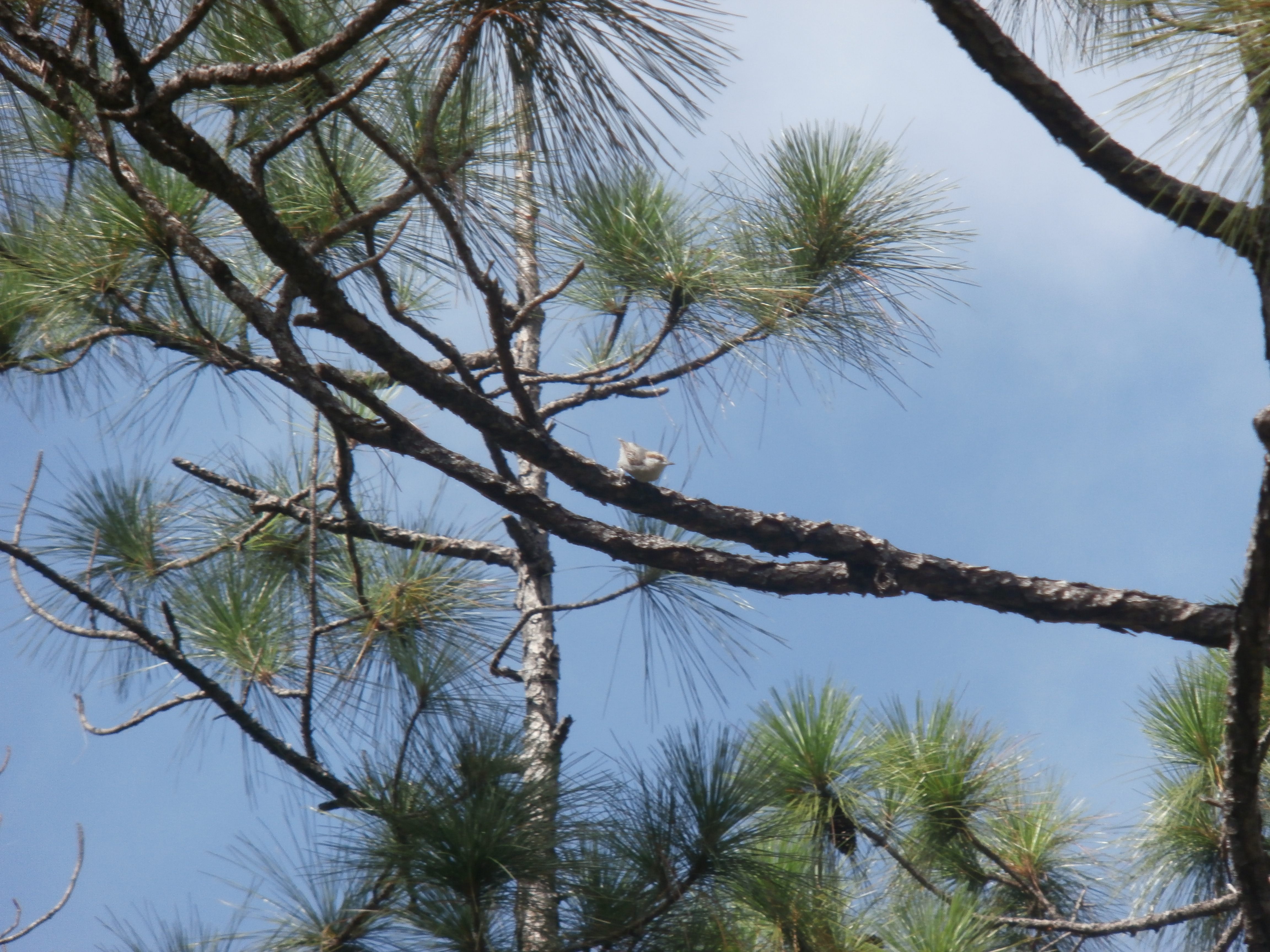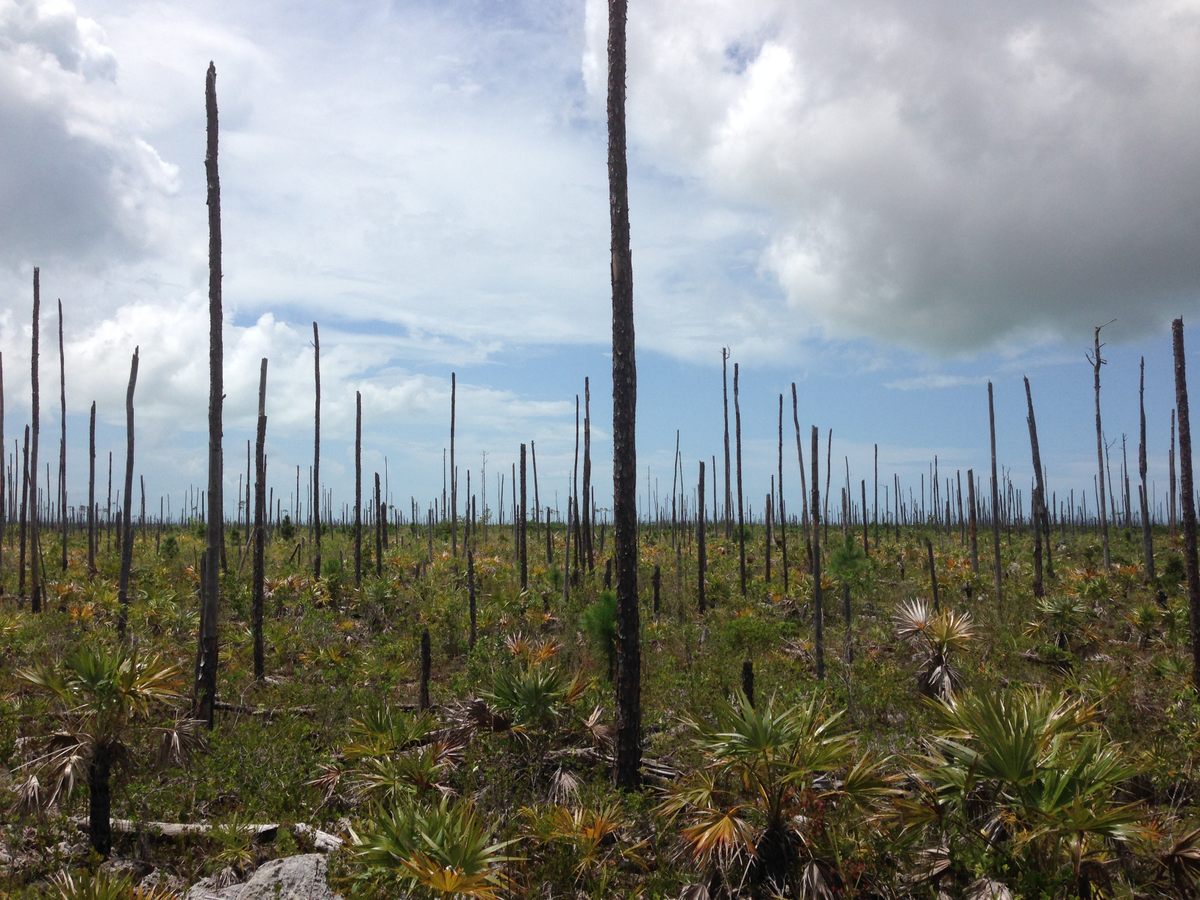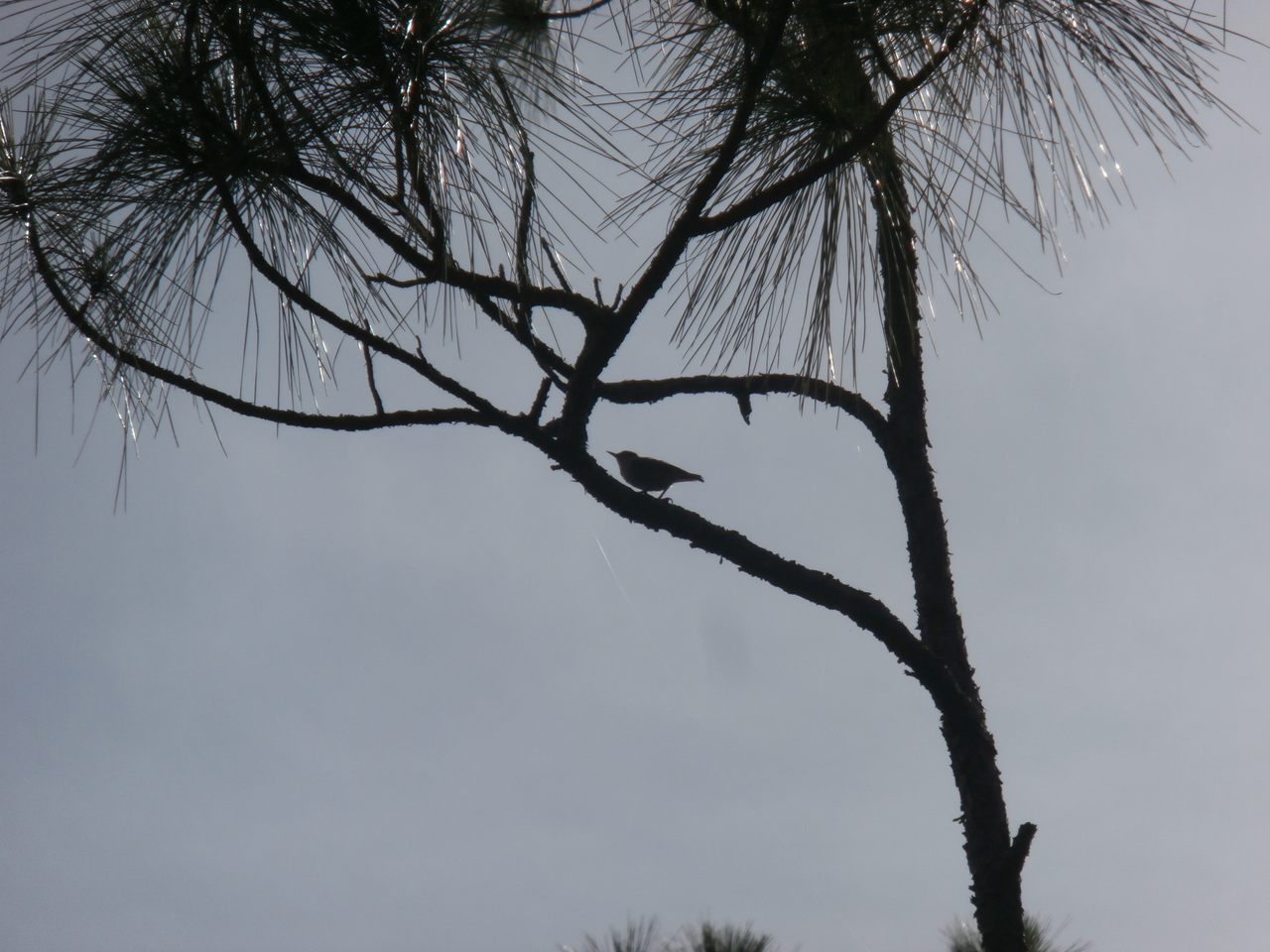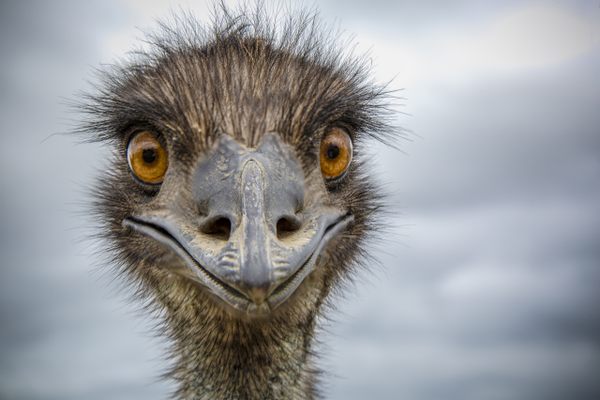The Last Days of the Bahama Nuthatch
What’s it like to “very probably” witness extinction?
For close to two months, the Bahama nuthatch (Sitta insularis) had evaded Matthew Gardner and David Pereira. They were deep in the pine forests of Grand Bahama Island now, deeper than any previous study of the bird had gone, and still nothing. If the tiny white-and-brown nuthatch was there, it didn’t want to be found.
The habitat that sheltered the nuthatch and a second species, the Bahama warbler (Setophaga flavescens), was no longer as lush and wooded in 2018 as it once had been. For years the birds had survived human encroachment, forest fires, and invasive species, but they had not thrived. When Hurricane Matthew hit Grand Bahama—the only place the nuthatch has ever been found—in 2016, the blow was devastating. The researchers, master’s students in applied ecology and conservation at East Anglia University in Norwich, England, knew that numbers for both birds were way down but not how low they’d gone.

The pair covered hundreds of miles on foot, keeping their eyes and ears peeled and playing recordings of the nuthatch and warbler’s territorial calls to draw the birds out of the spindly pines. The warbler, a striking yellow insectivore with a long beak and a black head and wings, played along. Gardner and Pereira saw or heard the species 327 times over their three months of research. But, while they felt certain the nuthatch must be there, week after week the bird eluded them. Until one day, it didn’t.
“The moment we played that [nuthatch call recording], we instantly heard a response call,” remembers Gardner. “Then to see the bird physically coming toward you! You go, ‘that’s it! That’s the nuthatch!” The pair would encounter the little, wind-up toy-like bird five more times before the end of their survey. Gardner believes they were “very probably” the last people on Earth to see it alive.
Back in 2018, although the nuthatch population was small, it would not have been impossible to save them from disappearing completely, says Gardner. But Hurricane Dorian had other plans. The Category 5 storm pummeled the Bahamas archipelago in September 2019. The nuthatch hasn’t been found since.
“I just can’t put it into words,” says Gardner. “It’s a sobering thing. You’re surrounded by doom and gloom stories about species declining but you don’t think you’d be witness to it.”

The warbler also suffered in the chaos of Dorian, where 24 hours of sustained 183 mile-per-hour winds resulted in the worst natural disaster in Bahamas’ recorded history. “Photos showed the extent of island devastation,” explains Diana Bell, the professor of biological sciences at East Anglia University who supervised Gardner and Pereira’s research. “Dorian plus the accompanying spill from a large oil storage tanker left minimal cover that would have protected them.”
Most of the warblers Gardner and Pereira saw or heard in the central and eastern pineyards of Grand Bahama were found in areas that had experienced wildfire events but where tall thatch palms still stood and insects hid in the peeling, burnt bark. Dorian wiped them out, and, so too, the warblers. Neighboring Abaco Island, where portions of the pine forests remain intact, is believed to harbor the only survivors of the storm’s wrath. As a result, the species has been classified as endangered.
There’s still hope for the warbler, explains Gardner. “Although at the moment it looks like it’s been lost from Grand Bahama, you’ve got to hope that the more you look, you’ll find it in the more isolated corners. Now is the time to go in, find out where they are, protect the habitat, and control the invasive species.”

The Bahama warbler wouldn’t be the first endangered bird to be brought back from the brink. Both the black robin endemic to New Zealand’s Chatham Islands and the pink pigeon endemic to Mauritius have been saved through the careful dedication of conservation biologists, environmental managers, and volunteers.
Gardner does not hold the same hope for the nuthatch. While it’s possible that a small number of individuals do remain, they’re not likely to help the species’ future prospects. The Bahama nuthatch is a cooperative breeder that relies on a family group to raise its young. If there are no family groups left, hatchlings won’t stand a chance. Even if there were enough birds left to raise offspring, the colony would likely be plagued by genetic disorder and vulnerability to disease due to inbreeding.
“It’s been years and we have not heard of any sightings,” says Gardner. “It’s hard facing the brutal reality. As much as it pains me to say it, the Bahama nuthatch is functionally extinct.”
























Follow us on Twitter to get the latest on the world's hidden wonders.
Like us on Facebook to get the latest on the world's hidden wonders.
Follow us on Twitter Like us on Facebook